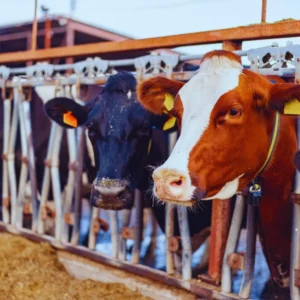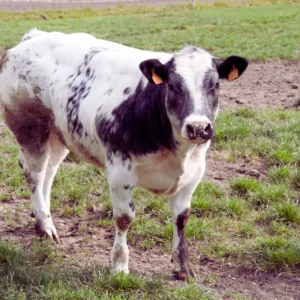Summary
Recent research at Kansas State University (KSU), in collaboration with major meat processors, focuses on how environmental conditions influence RFID technology in cattle tracking. These efforts aim to provide insights into how such factors affect RFID tag accuracy, helping meat producers enhance their cattle identification systems. This article explores the environmental variables, the technology involved, and the expected outcomes of this important research.
Technological Advances in RFID Cattle Tags Systems
RFID technology plays a critical role in modern livestock management by allowing efficient cattle tracking and identification. However, environmental conditions can sometimes compromise performance. To address this, KSU researchers are conducting a comprehensive study to assess the impact of these variables on RFID cattle tags. Funded by the U.S. Department of Agriculture and the Kansas Department of Commerce, the project includes collaboration with industry leaders like Tyson Foods and Cargill Meat Solutions.

The Scope of the Study
The study focuses on evaluating the functionality of low-frequency 134.2 kHz RFID tags and readers compliant with ISO 11785 standards. One of the main objectives is to identify types of environmental interference—such as electromagnetic disturbances—that negatively impact RFID tag accuracy. Additionally, the study will compare hardware performance across different brands, including Allflex USA, Digital Angel, Temple Tag, Y-Tex, and Farnam.
Key variables being measured include:
- Read Range: The maximum distance at which RFID tags can be read accurately.
- Resonance and Frequency Response: How efficiently the tags respond to the reader’s signals.
- Tag Orientation: The effect of tag placement on performance.
Researchers will test these variables in 15 different auction environments throughout Kansas to ensure the findings apply across diverse scenarios.
RFID Hardware Performance and Environmental Factors
Understanding the environmental factors affecting RFID tags and readers is crucial for improving cattle tracking systems. Researchers focus on electromagnetic interference (EMI), which can reduce read rates. This interference often comes from motors or other electrical equipment common in auction houses and processing plants.
Testing Protocol
To ensure thorough testing, researchers will use stationary RFID interrogators from five manufacturers: Allflex USA, Digital Angel, Farnam, Osborne Industries, and ID-Ology. The study will involve 3,000 RFID tags—500 from each brand—installed on cattle ears at various positions. Around 40% of the tags, demonstrating average performance, will undergo more detailed analysis. Researchers will also examine how different tag orientations (such as donut-shaped or quarter-sized tags) influence read rates under varying environmental conditions.

RFID Cattle Tags Frequently Asked Questions
- What is the main goal of this research?
The goal is to understand how environmental factors like electromagnetic interference affect the performance of RFID systems used in cattle tracking.
- How many RFID Cattle Tags are being tested?
Researchers are testing a total of 3,000 RFID tags from six manufacturers in this study.
- Why is tag orientation important?
Tag positioning on a cattle’s ear can significantly affect read rates, especially in environments with high interference.
- When will the study results be available?
The results are expected by spring 2007.
- How will the study benefit the cattle industry?
By identifying factors that affect RFID performance, this research will help meat processors and auctioneers invest in more effective cattle identification systems, improving operational efficiency and recall management.
Performance Metrics of RFID Cattle Tags Across Different Manufacturers
| RFID Tag Manufacturer | Read Range | Resonance Efficiency | Frequency Response | Tag Orientation Impact |
| Allflex USA | High | Excellent | Stable | Moderate |
| Digital Angel | Medium | Good | Slight Variations | High |
| Temple Tag | High | Excellent | Consistent | Low |
| Y-Tex | Medium | Good | Moderate | Moderate |
| Farnam | Low | Fair | Variable | High |
This structured approach ensures a detailed examination of RFID technology in real-world conditions, ultimately aiming to provide unbiased insights to beef producers and other stakeholders.
